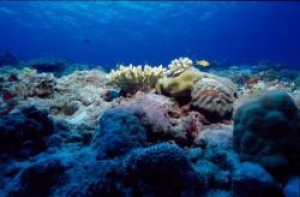Seychelles and Mauritius sign landmark treaties

Seychelles President James Michel and Mauritian Prime Minister Navin Ramgoolam have signed two important treaties today, to share the management of the continental shelf of the Mascarene Plateau region. As a result, Seychelles and Mauritius now have joint jurisdiction over an additional area of 396,000 square kilometers.
This followed a meeting between the President and the Prime Minister, where they discussed several areas of cooperation, including health, education, tourism, and the fight against piracy.
“I would like to congratulate you, Mr. Prime Minister, for your vision and great work that you have done to develop the country. I have seen tremendous development and progress since my last visit in 2005. Mauritius is moving fast with dynamism, and together, we can collaborate for the benefit of our people,” said President Michel during the meeting.
President Michel commended the signature of the landmark agreements, and thanked the government of Mauritius for working with Seychelles to achieve the historic partnership.
“It is really remarkable we have managed to achieve this together- it is the first time two countries have signed such an agreement without going through arbitration. We are also amongst the first countries to make a joint submission to the UN. And we did so well before the deadline. It is an extraordinary symbol of our genuine desire to work together as neighbors, as partners, and friends,” said President Michel following the signing.
ADVERTISEMENT
The President said that the Mascarene Plateau region will provide for the economic, social, and cultural wellbeing of present and future generations as Seychelles and Mauritius exploit the resources of the ocean together.
“We believe that the ocean which surrounds us has immense potential for Small Island Developing States [SIDS], as well as coastal states. We need to harness the power of the blue economy. The ocean unites us and, therefore, it is vital that as two neighborly nations, we are able to access, manage, and conserve resources of the ocean seabed and subsoil together.”
The first treaty proclaims the extended continental shelf outer limits in order to provide for its recognition under the respective national laws and for the extended purposes of international law, which entails depositing the coordinates and charts showing the outer limit boundaries of the Extended Continental Shelf.
The second treaty provides an overarching framework for the establishment of a joint management (structure and mechanism) for the joint administration and management of the Extended Continental Shelf, which is to be proclaimed under the first treaty.

